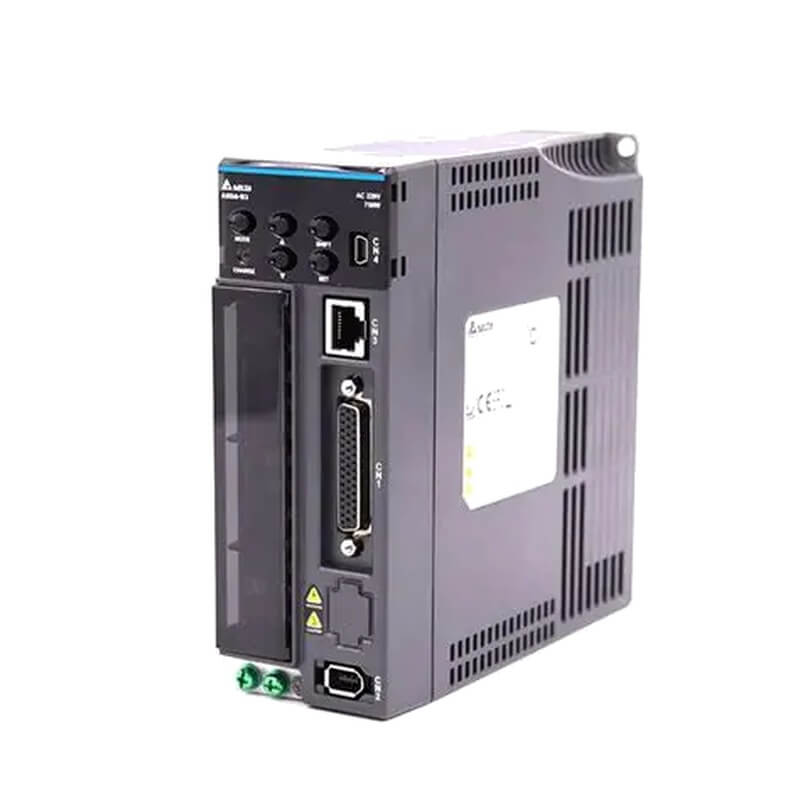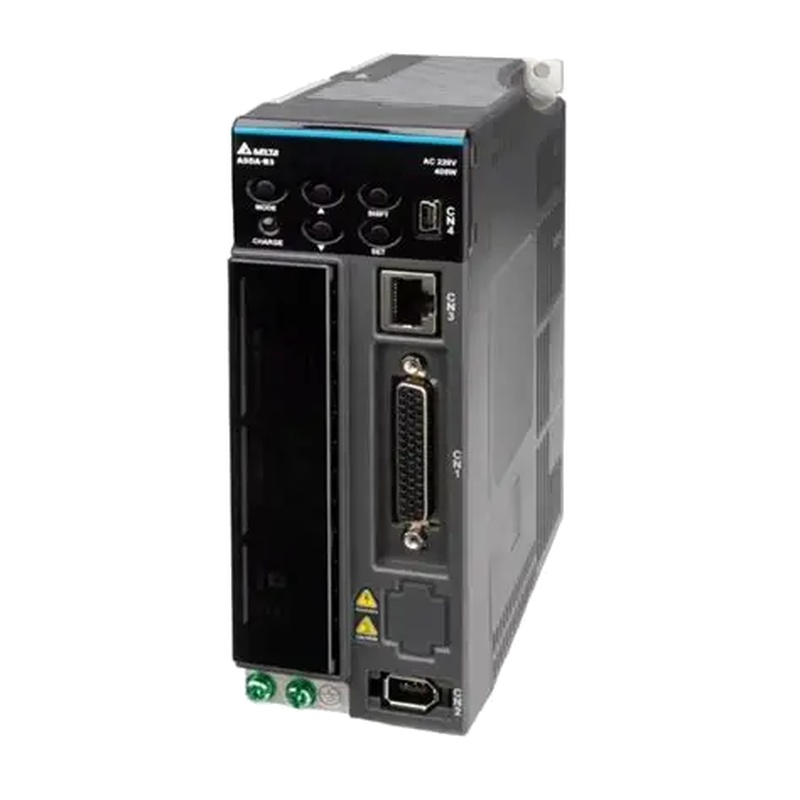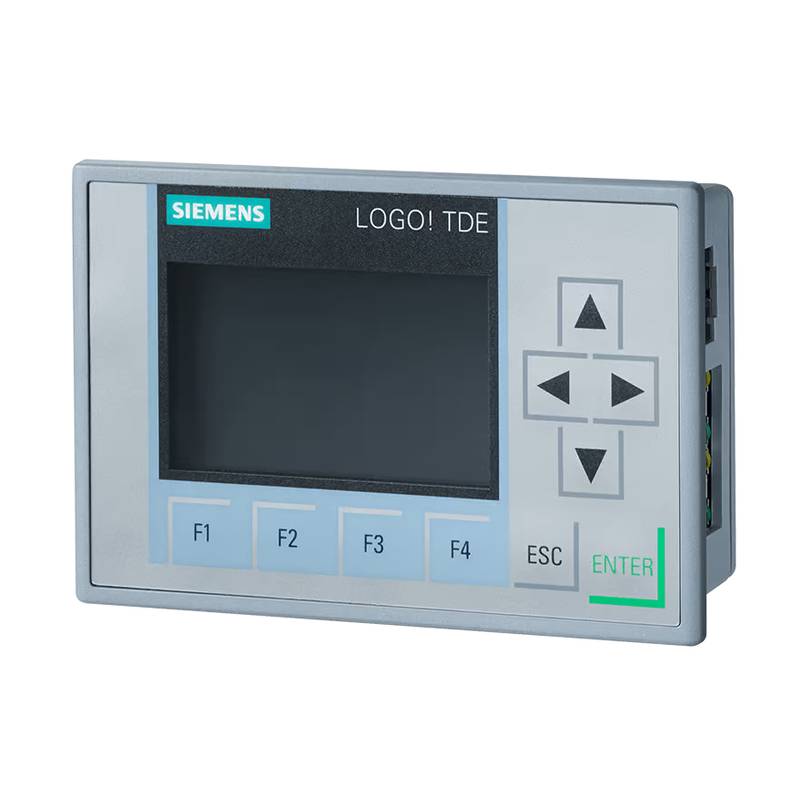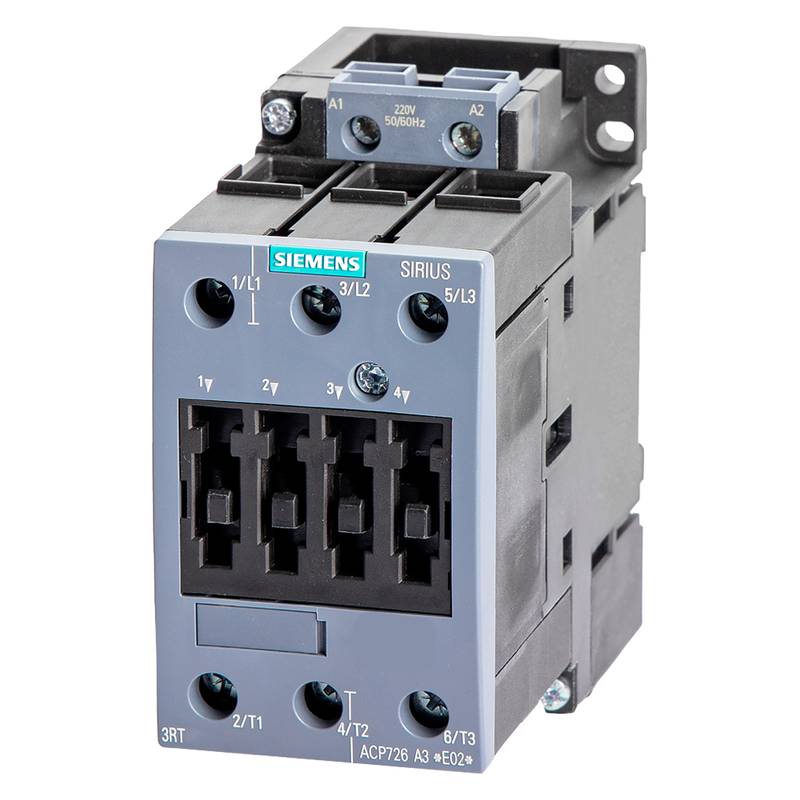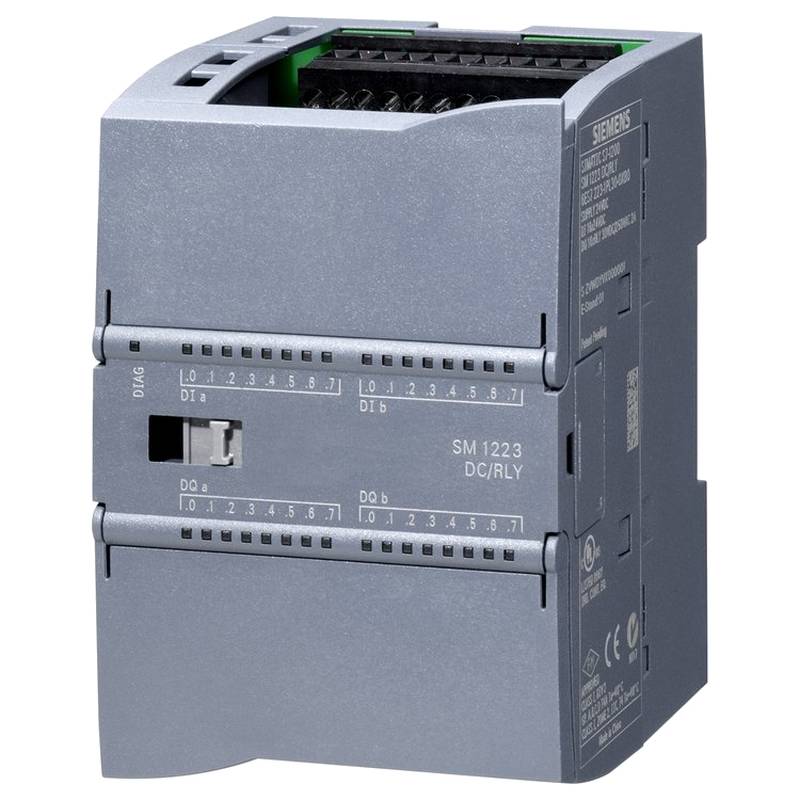
The DELTA ASD-B3-1021-E is a high-power single-phase servo system designed for demanding industrial automation applications. This advanced drive offers exceptional precision, rapid response, and robust safety features, making it a superior choice for CNC machinery, robotics, and high-speed packaging lines. Its key advantages include a 3.1 kHz bandwidth for enhanced dynamic performance, 24-bit encoder resolution for unparalleled positioning accuracy, and integrated Safe Torque Off (STO) functionality with SIL2 compliance. The system supports motor speeds up to 6000 rpm and delivers up to 350% of maximum torque, ensuring powerful and stable operation even under complex loads. The ASD-B3-1021-E integrates seamlessly with EtherCAT for high-speed communication, simplifying multi-axis setups and reducing wiring complexity. Its compact design, compared to previous generations, also contributes to space savings in control cabinets.
Product Specifications
| Feature | Specification |
| :---------------------- | :----------------------------------------------------- |
| Model | ASD-B3-1021-E |
| Power Rating | 1 kW |
| Input Voltage | 1-Phase/3-Phase, 220 VAC |
| Output Current | 7.3 Arms |
| Bandwidth | 3.1 kHz |
| Encoder Resolution | 24-bit (16,777,216 pulses/revolution) |
| Max. Motor Speed | 6000 rpm |
| Max. Torque | 350% of rated torque |
| Communication Interface | EtherCAT, RS485, CANopen, DMCNET |
| Safety Function | Safe Torque Off (STO), SIL2 compliant |
| Control Modes | Pulse Train, Analog Voltage, PR Mode, Speed, Position |
| Auto-Tuning | Yes |
| Vibration Suppression | Yes |
| Dimensions | Compact design (up to 31% smaller than B2 series) |
| IP Rating | IP20 (Drive) |
Core Features & Market Positioning
The DELTA ASD-B3-1021-E servo system distinguishes itself through its superior performance and advanced features, positioning it as a leading solution for precision motion control. Its 3.1 kHz bandwidth represents a significant leap from older models, enabling faster response times and improved accuracy in dynamic applications. The integration of 24-bit absolute encoders ensures exceptionally high positioning precision, a critical factor for industries like semiconductor manufacturing and complex machine tooling. Market analysis highlights the ASDA-B3 series as Delta's third-generation servo system, designed for increased efficiency, user-friendliness, and compatibility with a range of Delta motors, including B2, A3, and A2 series. The inclusion of Safe Torque Off (STO) with SIL2 compliance is a major safety differentiator, crucial for automated environments requiring stringent safety standards. Furthermore, the system's ability to operate directly from 230 VAC mains voltage without an external power supply simplifies installation and reduces system costs.
Key Application Scenarios
The DELTA ASD-B3-1021-E finds its optimal application in scenarios demanding high precision, rapid acceleration/deceleration, and reliable control. CNC machining centers benefit from its enhanced dynamic performance and high resolution for intricate part production. In the robotics sector, its fast settling times and accurate positioning are vital for complex assembly and pick-and-place operations. The packaging and printing industries leverage the ASD-B3-1021-E for high-speed web handling and synchronized motion control, where precise timing and smooth operation are paramount. Warehousing and material handling systems utilize its PR (Preset Position) mode for efficient automated guided vehicle (AGV) navigation and conveyor belt synchronization. Its EtherCAT interface is particularly advantageous for multi-axis coordinated motion control, commonly found in automated assembly lines and advanced manufacturing equipment.
Practical System Integration Guidance
Integrating the DELTA ASD-B3-1021-E servo system involves straightforward wiring and configuration, facilitated by Delta's user-friendly ASDASoft software. For basic operation, the drive connects to a 220 VAC single-phase or three-phase power supply via terminals L1C and L2C. The control circuit power input is also supplied via these terminals. Motor power is connected through U1, V1, and W1. Encoder feedback is typically connected via a dedicated connector (e.g., CN1), ensuring accurate position feedback. The EtherCAT interface simplifies network integration, allowing for high-speed, deterministic communication with PLCs and other controllers. Configuration using ASDASoft involves motor parameter setup, auto-tuning for optimal performance, and defining motion profiles. The software supports advanced functions like vibration suppression and system modeling, which can be accessed through its graphical interface. For example, setting up PR mode involves configuring up to 100 preset positions and speeds, enabling simple motion sequences controlled by digital inputs or a PLC.
Operation and Risk Mitigation
Safe operation of the DELTA ASD-B3-1021-E is ensured through its integrated Safe Torque Off (STO) function. This function, compliant with SIL2 standards, provides a reliable method to disable motor torque in emergency situations, preventing unexpected movement and safeguarding personnel and machinery. Users must ensure that the STO circuit is properly wired and integrated with a safety relay according to the system's safety requirements. Troubleshooting common issues involves monitoring the drive's diagnostic display for alarm codes. Alarms are categorized into General, Motion Control, STO, and Communication types. For instance, an "AL006 Overload" alarm might indicate excessive load or incorrect parameter settings, requiring a check of motor capacity, mechanical vibration, or wiring. Parameter reset failures (AL09C) can occur if an error happens during the reset process. Always refer to the ASDA-B3 Series User Manual for detailed alarm codes and corrective actions to mitigate operational risks effectively.
Scalability & Long-Term Value
The DELTA ASD-B3-1021-E servo system offers significant scalability and long-term value. Its compatibility with previous Delta servo motor series (B2, A3, A2) allows for easier upgrades and integration into existing systems. The ASDA-B3 series is designed to be part of a broader Delta industrial automation ecosystem, offering seamless integration with other Delta products such as PLCs, HMIs, and vision systems. The EtherCAT communication protocol supports multi-axis control and can connect to a vast number of axes and remote I/O modules, facilitating the expansion of automation projects. Delta's commitment to continuous development is evident in the software updates and potential for integration with IIoT platforms, enabling remote monitoring, predictive maintenance, and enhanced data analytics for optimized factory operations. The availability of comprehensive documentation, including user manuals and CAD files, further supports long-term maintenance and system evolution.
Frequently Asked Questions
1. What are the primary advantages of the DELTA ASD-B3-1021-E servo drive?
The DELTA ASD-B3-1021-E offers superior precision and speed for industrial automation. Its advanced features enhance productivity and operational efficiency significantly. It is designed for high-performance motion control tasks.
This drive boasts a 3.1 kHz bandwidth and 24-bit encoder for precise positioning. It also includes an integrated STO safety function for enhanced operational safety. These features combined make it highly competitive.
The system's compatibility with older Delta motor series and its compact design contribute to long-term value and ease of integration. It represents a significant upgrade over previous generations.
2. How does the DELTA ASD-B3-1021-E handle safety in industrial environments?
Safety is a core feature with the integrated Safe Torque Off (STO) function. This function is compliant with SIL2 safety standards, ensuring reliable deactivation of motor torque. It is crucial for preventing unexpected movements and protecting personnel.
Proper wiring of the STO circuit is essential for its effective operation. Users must follow safety guidelines and integrate it with appropriate safety relays as per machine safety regulations. This ensures a robust safety system.
The STO feature is a key differentiator, providing peace of mind for critical applications. It aligns with the increasing demand for safety-integrated automation solutions in modern factories.
3. What are the key technical specifications to consider for the DELTA ASD-B3-1021-E?
This servo drive features a 1 kW power rating and operates on 220 VAC single-phase or three-phase input. Its 3.1 kHz bandwidth and 24-bit encoder deliver exceptional dynamic performance and precision.
It supports motor speeds up to 6000 rpm and provides 350% maximum torque for demanding applications. EtherCAT communication is standard for high-speed data exchange.
The drive has a compact design, is up to 31% smaller than previous models, and offers multiple control modes including Pulse Train, Analog Voltage, and PR Mode.
4. Which industries and applications benefit most from the DELTA ASD-B3-1021-E?
Industries requiring high precision and speed, such as CNC machining, robotics, and electronics manufacturing, benefit greatly. Its performance is ideal for intricate tasks and rapid movements.
The packaging and printing sectors utilize it for synchronized motion control and high-speed web handling. Its reliability ensures consistent production output and quality.
It's also well-suited for warehousing and logistics, especially for automated guided vehicles and conveyor systems. The PR mode simplifies complex positional tasks.
5. How does the DELTA ASD-B3-1021-E facilitate system integration?
Integration is streamlined through various communication interfaces, including EtherCAT, RS485, and CANopen. This allows for flexible network configurations and efficient data exchange.
The ASDASoft software simplifies setup, configuration, and tuning. Auto-tuning capabilities reduce commissioning time and optimize performance automatically.
Direct operation from 230 VAC mains voltage reduces the need for external power supplies, simplifying wiring and installation, and lowering overall system cost.
6. What is the role of EtherCAT in the DELTA ASD-B3-1021-E system?
EtherCAT provides high-speed, deterministic communication for precise synchronization of multiple axes. This is crucial for complex automation tasks requiring tight coordination between drives and controllers.
Its simplified wiring reduces installation time and maintenance costs compared to traditional fieldbuses. It enables efficient integration of remote I/O modules.
With EtherCAT, the system can support a large number of axes, making it scalable for expanding automation projects and complex machinery.
7. How does the auto-tuning feature of the DELTA ASD-B3-1021-E work?
Auto-tuning simplifies the process of optimizing servo system parameters without manual adjustment. This significantly reduces setup time and effort for engineers. It ensures the system operates at peak performance efficiently.
The feature analyzes motor characteristics and system dynamics to automatically set parameters like gain adjustments and vibration suppression. This results in smooth and stable operation.
This automated process helps achieve optimal performance quickly, even for users with limited servo tuning expertise, making the system more accessible.
8. What are common troubleshooting steps for the DELTA ASD-B3-1021-E?
Referencing the user manual for specific alarm codes is the primary troubleshooting step. Codes like AL006 (Overload) or AL09C (Parameter Reset Failed) provide initial diagnostic information.
Check physical connections, including motor power and encoder cables, for any faults or disconnections. Verify parameter settings related to the alarm, especially those impacting motor load or control modes.
If issues persist, consult the detailed troubleshooting guide in the ASDA-B3 Series User Manual or contact Delta technical support for further assistance.
9. Can the DELTA ASD-B3-1021-E be used with older Delta servo motors?
Yes, the ASDA-B3 series servo drives are designed to be compatible with older Delta servo motor series, including B2, A3, and A2 motors. This backward compatibility aids in upgrading existing systems.
This compatibility allows users to leverage their current motor inventory or transition to newer drive technology without replacing all components. It offers flexibility in system design.
It ensures a smooth upgrade path, preserving investment while gaining the benefits of the latest servo drive technology from Delta.
10. How does the DELTA ASD-B3-1021-E contribute to increased production efficiency?
Its high responsiveness and reduced settling times (up to 40% faster than previous models) enable quicker cycle times in automated processes. This directly boosts overall production throughput.
Advanced features like vibration suppression and precise motion control minimize errors and optimize movement paths, leading to higher product quality and less waste.
The user-friendly interface and auto-tuning features reduce commissioning and setup times, allowing machines to get operational faster and stay productive.














